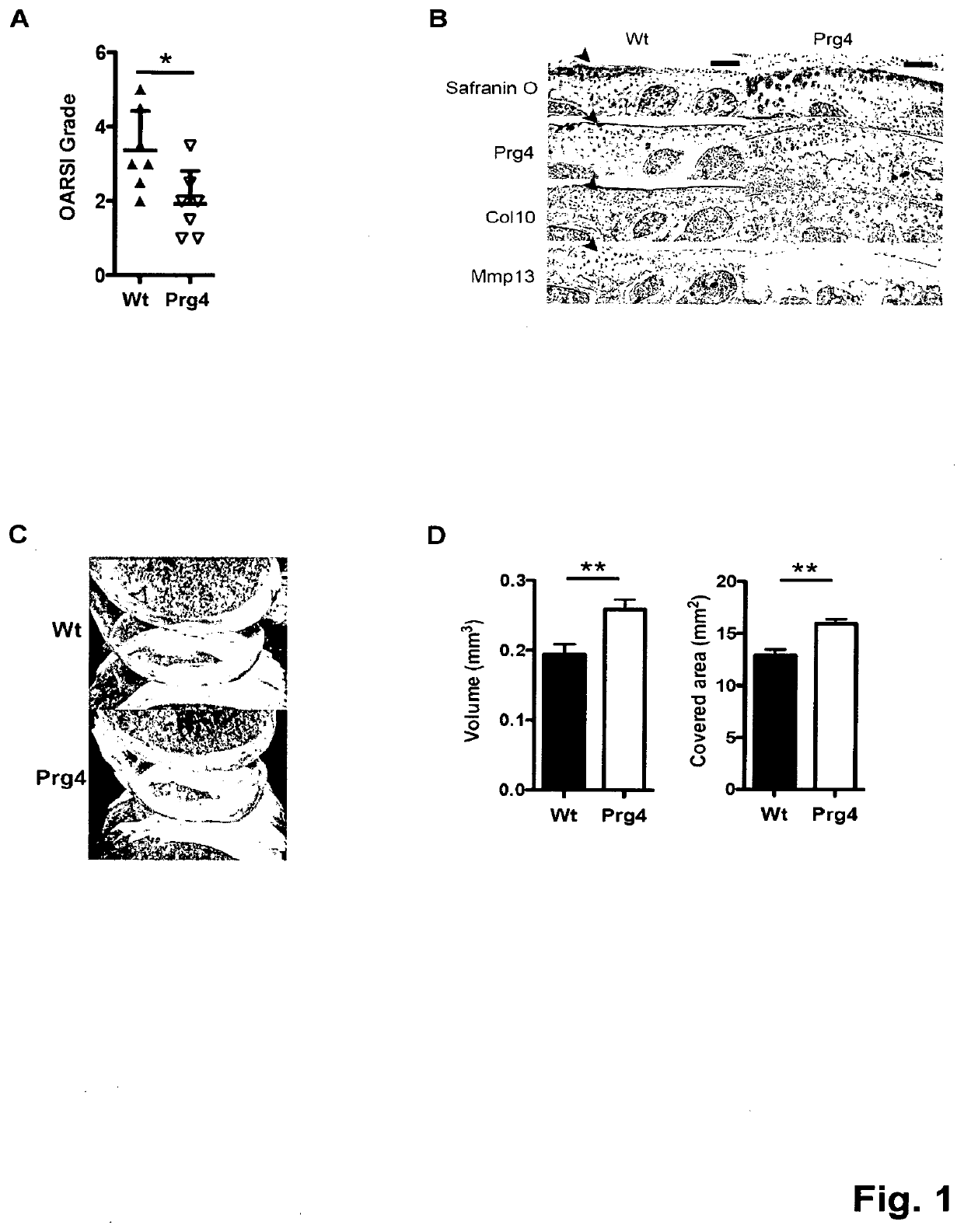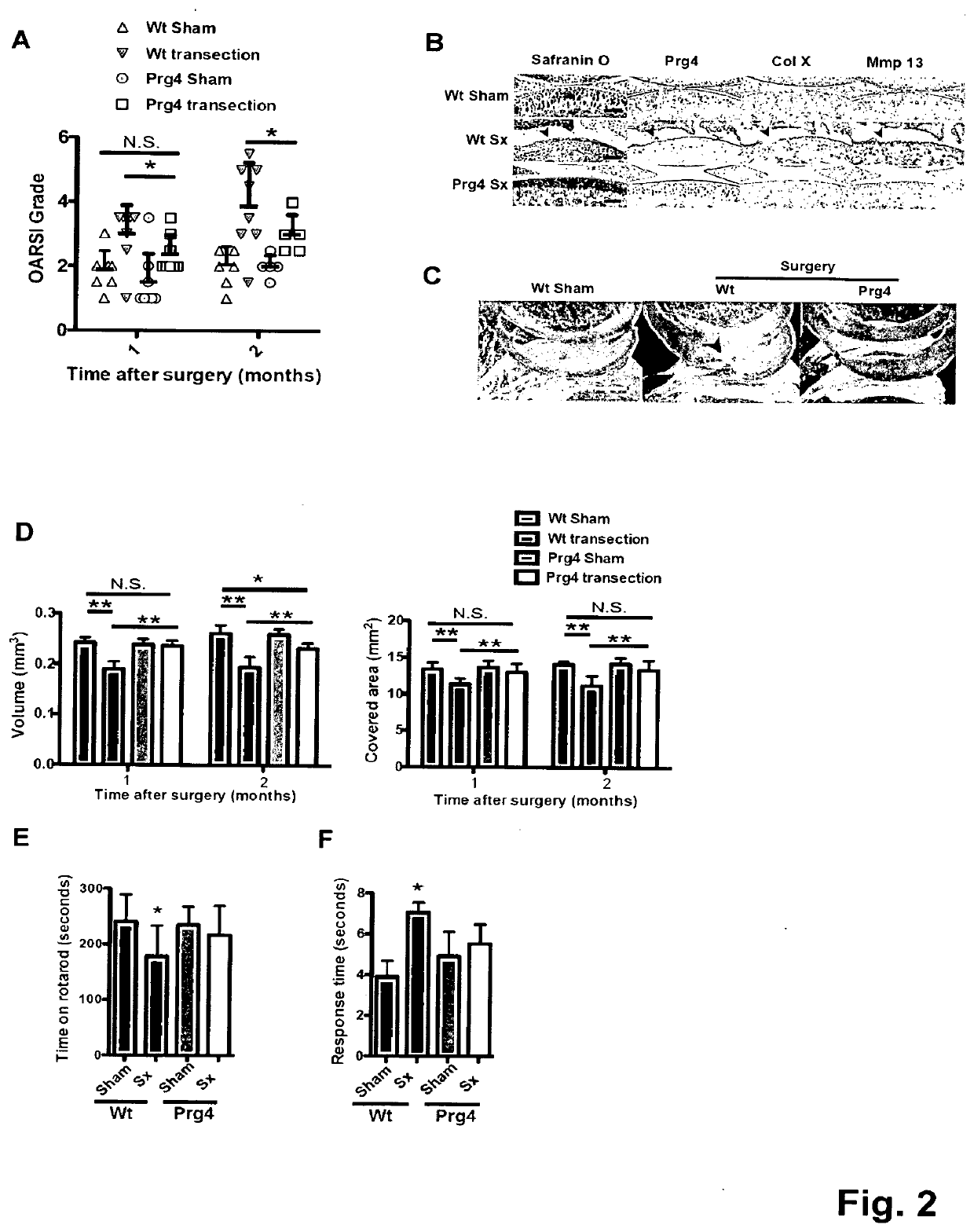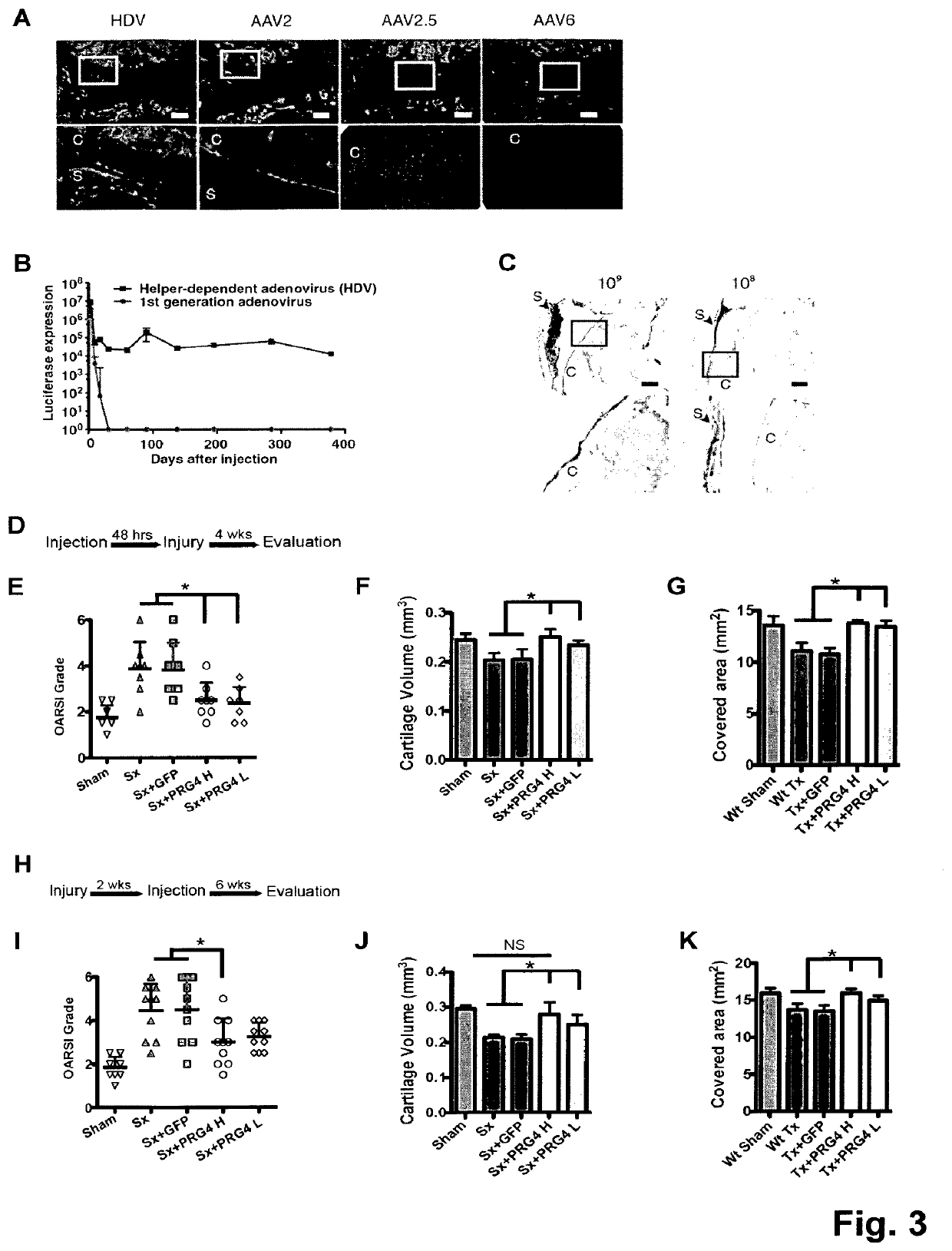Helper-dependent adenoviral gene therapy delivery and expression system
a technology of adenoviral gene therapy and adenoviral gene, applied in the direction of dsdna viruses, viruses/bacteriophages, genetic material ingredients, etc., can solve the problems of no curative treatment currently available, the long-term biological effect of prg4 over-expression and the molecular mechanism of its potential therapeutic benefits are still poorly understood, and the development of inhibitors of such pathways has not proven effective in clinical settings. to achieve the effect of prevention and/or
- Summary
- Abstract
- Description
- Claims
- Application Information
AI Technical Summary
Benefits of technology
Problems solved by technology
Method used
Image
Examples
Embodiment Construction
Results
PRG4 Prevents Development of Age Related Osteoarthritis Changes
[0044]To investigate the long-term effect of Prg4 over-expression, the inventors generated transgenic mice expressing Prg4 under the cartilage specific type II collagen promoter (Col2a1) (FIG. 5A). PRG4 transgenic mice expressed Prg4 ectopically in growth plate cartilage and over-express Prg4 in articular cartilage throughout development and adulthood (FIG. 5B-D). Macroscopically, the inventors detected no differences in growth or skeletal development in Prg4 transgenic mice when assessed by weight (FIG. 5E). Microscopically, markers of chondrocyte proliferation or apoptosis remained the same in Prg4 mice vs. wild type mice as assessed by BrdU staining (p=n.s. in both proliferating and resting zone of P1 chondrocytes) (FIG. 5F) and TUNEL staining (no positive signals in P1 chondrocytes) (FIG. 5G), respectively. These data suggested that ectopic over-expression of Prg4 in cartilage did not significantly affect chon...
PUM
| Property | Measurement | Unit |
|---|---|---|
| size | aaaaa | aaaaa |
| stiffness | aaaaa | aaaaa |
| mechanical behavior | aaaaa | aaaaa |
Abstract
Description
Claims
Application Information
 Login to View More
Login to View More - R&D
- Intellectual Property
- Life Sciences
- Materials
- Tech Scout
- Unparalleled Data Quality
- Higher Quality Content
- 60% Fewer Hallucinations
Browse by: Latest US Patents, China's latest patents, Technical Efficacy Thesaurus, Application Domain, Technology Topic, Popular Technical Reports.
© 2025 PatSnap. All rights reserved.Legal|Privacy policy|Modern Slavery Act Transparency Statement|Sitemap|About US| Contact US: help@patsnap.com



